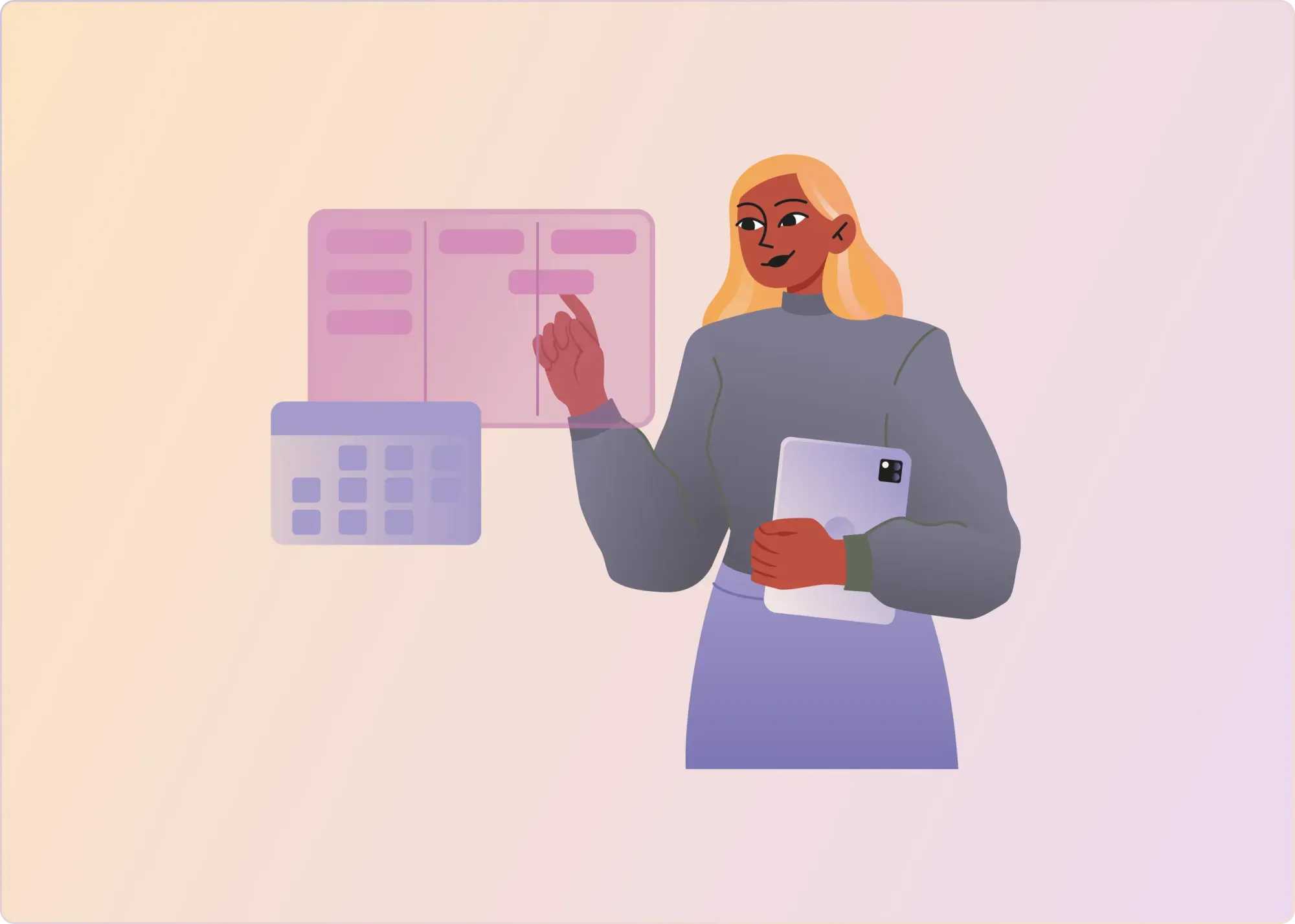In the competitive landscape of B2B SaaS, a positive onboarding experience is critical for product adoption and long-term customer success. A well-structured onboarding process sets the stage for happy customers, reduces churn rate, and maximizes the value of your product.
This guide from VH-info, your trusted expert in SaaS link building, breaks down the complexities of SaaS onboarding, providing actionable insights and a comprehensive onboarding checklist to ensure your new customer has a great onboarding.
We aim to help SaaS companies transform first time users into active users through effective onboarding.
What is B2B SaaS Onboarding?

SaaS onboarding is the process of guiding new users to fully adopt and realize the value proposition of your SaaS product. It encompasses every step a customer takes from initial sign-up to becoming a proficient, engaged user.
Unlike one-time software purchases, SaaS relies on recurring subscriptions, making customer retention paramount. A streamlined onboarding flow ensures the learning curve is minimized and that users quickly grasp how the product works.
The onboarding journey is not just about teaching different features; it’s about showcasing how your solution addresses their pain points and achieves their goals.
When is Onboarding Necessary in SaaS?

User onboarding is essential whenever a new customer interacts with your SaaS product for the first time.
This includes:
- Initial sign-up for a free trial or paid subscription
- Introduction of new features or updates
- Expansion into advanced features
- Any instance where guide users are needed to maximize the value of your product
Without a robust onboarding process, SaaS companies risk losing new users who may become frustrated or overwhelmed.
Key Elements Of A Successful B2B SaaS Onboarding Process

A good onboarding experience requires careful planning and execution.
Here are the core components:
- Understanding Customer Needs: Before designing your onboarding flow, deeply analyze your target audience. Identify their pain points, goals, and technical expertise. Tailor your onboarding materials to address these specific needs, ensuring the first step is relevant and engaging. Customer feedback is very important here.
- Structuring The Onboarding Journey: Break down the onboarding process into manageable onboarding tasks. Design user flows that are intuitive and logical, guiding SaaS user from basic to advanced features seamlessly.
- Customizing The Process For Each Client: Recognize that not all clients are the same. Offer personalized onboarding experience based on company size, use case, and technical proficiency. Segment your audience and provide tailored guidance.
- Monitoring and Evaluating Progress: Track user behavior throughout the onboarding journey. Utilize analytics to identify drop-off points and areas for improvement. Regularly solicit customer feedback to refine your onboarding process.
How To Create A Successful SaaS Customer Onboarding Process?

Here’s a step-by-step onboarding checklist to implement a great onboarding strategy:
- Pre-Onboarding and Kickoff Meeting: Before the official onboarding process begins, provide new users with resources such as knowledge base articles or introductory videos. Schedule a kickoff meeting to set expectations and establish a personal connection.
- Needs Assessment and Goal Setting: Use the kickoff meeting to conduct a thorough needs assessment. Ask questions to understand the client’s objectives, challenges, and desired outcomes.
- Platform Setup and Integration: Assist SaaS customers with the initial setup of your SaaS product. Provide clear instructions and customer support to ensure seamless integration with their existing systems.
- Training and Knowledge Transfer: Offer comprehensive training sessions to familiarize onboard users with the key features of your platform. Use a variety of formats, such as live demos, recorded tutorials, and interactive workshops.
- Testing, Validation, and Go-Live: Before the official launch, conduct thorough testing to ensure everything works as expected. Validate that the client’s goals have been met and that they are comfortable using the platform.
- Follow-Up and Ongoing Support: The onboarding journey doesn’t end at go-live. Provide new customers with ongoing customer support and resources to ensure continued product adoption.
Challenges in B2B SaaS Onboarding

- Managing Complex Client Requirements: B2B SaaS customers often have detailed needs. Your customer onboarding process needs to be flexible to adapt to these specific demands, which can be tough to handle.
- Avoiding Information Overload: Don’t overwhelm new users with too much info at once. A good onboarding approach breaks down onboarding tasks into easy-to-digest chunks.
- Ensuring Cross-Team Collaboration: Effective onboarding requires your product team, customer success manager, and support team to work together smoothly. Good communication is key.
Best Practices For B2B SaaS Onboarding

Creating an easy and helpful onboarding experience helps make happy customers and encourages them to use your SaaS product for a long time. If you follow these best SaaS onboarding examples, you can help new users become confident and successful SaaS users.
- Minimize Friction During Sign-Up: Make it easy for new users to sign up. The first step should be quick and painless to avoid losing potential SaaS users before they even start.
- Personalize the Onboarding Experience: Tailor the onboarding journey to each customer. Use data to customize their onboarding experience, making it feel relevant and personal.
- Front-Load Value with Quick Wins: Help new users see the value of your product right away. Give them a good user experience by showing them how the product works with some quick, easy wins.
- Keep Your Onboarding Flow Simple: Your onboarding flow should be straightforward and easy to follow. Avoid overwhelming new users with unnecessary steps, keeping the learning curve gentle.
- Use Milestone-Based Checklists: An onboarding checklist helps onboard users track their progress and feel a sense of accomplishment. A progress bar motivates them to complete onboarding tasks.
- Assign Customer Success Managers to High-Value Accounts: For important clients, a dedicated customer success manager can provide personalized support and guidance, ensuring a positive onboarding experience.
- Use Interactive Product Tours and Tooltips: Product tour and tooltips guide SaaS user through your platform, offering contextual onboarding and showing them how product features work.
- Automate Repetitive Processes: Use onboarding tool to automate routine onboarding tasks, saving time and ensuring consistency in your customer onboarding process.
- Regularly Update Onboarding Material: Keep your onboarding materials current and relevant. Update them to reflect new features and customer feedback, providing good onboarding resources.
- Celebrate User Achievements: Acknowledge milestones to reinforce a positive onboarding experience. Recognizing their success encourages continued engagement.
- Use Analytics: Track user behavior to see how people are using your product and identify areas for improvement. Using analytics helps you refine the onboarding process.
- Follow-Up After Onboarding: Continue engaging with new customers after user onboarding. Provide ongoing customer support, ask for customer feedback, and make sure they are getting the most out of your product. Following up ensures their long-term success and product adoption.
Measuring Success in B2B SaaS Onboarding

Setting clear goals is very important to see how well your B2B SaaS onboarding is working.
By keeping track of key metrics, you can learn about user behavior and find ways to make it better. This all helps create a happier onboarding experience for your clients, which can result in happy customers.
- Key Performance Indicators (KPIs) To Track: KPIs help you measure how well your onboarding process is doing. Track things like how many new users complete onboarding tasks, much time it takes them to see the value of your product, and how actively they use different features.
- Customer Feedback and Satisfaction Metrics: Customer feedback is vital for improving the onboarding experience. Use surveys and other methods to see how SaaS customers feel about their onboarding journey and how customer satisfaction can be improved.
- Retention and Churn Rates Analysis: Keeping an eye on retention and churn rates tells you if your onboarding process is leading to long-term customer success. High retention and low churn rate indicate that your new users are sticking around and finding value in your SaaS product. This shows you are providing a good onboarding.
Examples Of Great B2B SaaS Customer Onboarding Experiences

Here are some examples of great B2B SaaS customer onboarding experiences, explained simply:
- Calendly: This tool makes scheduling appointments easy. They keep sign-up simple by asking only for essential info, like your email and name. Once you confirm your email, you can quickly set up your custom calendar.
- Trello: This task management tool helps you hit your goals faster. After signing up, you see a simple checklist to guide you. They give new users a quick win by already crossing off the first task on their checklist when they arrive on the first screen.
- Klaviyo: This marketing platform needs a lot of info, but they break it into three easy steps to reduce the pain. After the final step, you’re taken to a dashboard with helpful topics.
- Box: The content management platform has a simple homepage with a clear call to action. Clicking it takes you to the pricing page, so you can quickly choose the right plan for your needs.
- HubSpot: This marketing automation tool personalizes onboarding using a short survey. Your answers lead to a customized onboarding flow tailored to your needs.
- Productboard: After validating your email, they use a fill-in-the-blanks method to learn about your use case. Once inside the app, you are presented with a checklist that shows the key features.
FAQ’s:
What Makes B2B Onboarding Different From B2C Onboarding?
B2B SaaS customer onboarding differs significantly from B2C because it involves more than just individual users. It’s not just about getting one person acquainted with the SaaS product; it’s about integrating it into an entire organization.
The onboarding process tends to be more intricate due to the complexity of business needs, requiring customization to align with specific workflows and use cases.
You’ll likely have multiple stakeholders involved, extended sales cycles, and a greater emphasis on training and support. Effective onboarding in B2B requires demonstrating the value of your product across the entire company, not just to individual SaaS users.
What is The Average TimeFrame For B2B SaaS Onboarding?
Pinpointing a single average timeframe for B2B SaaS onboarding is challenging because it varies greatly.
Much time it takes depends on several factors, including the complexity of your SaaS product, the size of the client organization, and their technical readiness. Some straightforward SaaS product might have an onboarding process that’s completed within a week or two.
However, more complex platforms, especially those requiring extensive data migration or integration with existing systems, could extend onboarding journey to several months. A good onboarding experience should prioritize efficiency without compromising thoroughness, ensuring new customers are fully equipped to succeed.
How Long Does A Typical B2B SaaS Onboarding Process Take?
So, how long does a typical B2B SaaS onboarding process actually take? Well, think of it like this: it’s not just about teaching someone how to click buttons; it’s about helping them fundamentally change how they do business.
The duration hinges on the learning curve associated with your SaaS product, how well you guide users through different features, and the level of customization required.
A good onboarding program aims to get users up and running quickly while ensuring they grasp the full potential of your platform. It’s a balance between speed and comprehensiveness to create a positive onboarding experience.
The goal is to transform new users into active users.
How Can I Personalize The Onboarding Experience For Different User Segments?
Personalization is key to effective onboarding. To personalize the onboarding experience, start by deeply understanding customer segments.
Create distinct user flows tailored to each segment’s unique needs and goals. Use data to dynamically adjust the onboarding materials and messaging based on user behavior and preferences.
For example, offer different product tours based on their use case. A personalized approach ensures that new users receive relevant guidance and see the value of your product quickly, leading to higher engagement and customer satisfaction.
Providing a good user experience through personalization is key.
How Do You Handle Onboarding For Large Enterprise Clients?
Onboarding large enterprise clients requires a specialized approach. Assign a dedicated customer success manager to serve as their primary point of contact and advocate within your organization.
Conduct a thorough needs assessment to understand their specific requirements and tailor the onboarding process accordingly. Develop a detailed onboarding checklist and project plan with clear milestones and timelines.
Proactive communication, regular check-ins, and ongoing support are important for ensuring a positive onboarding experience and driving product adoption within complex enterprise environments. This results in happy customers.
How Can Automation Be Used To Improve The Onboarding Process?
Automation is a game-changer for enhancing your onboarding process.
Use onboarding tool to automate routine onboarding tasks such as sending welcome emails, scheduling follow-up calls, and tracking user progress. Implement contextual onboarding with automated tooltips and in-app messages that guide SaaS user through different features at the right moment.
Automating repetitive processes frees up your team to focus on more strategic activities, such as providing personalized support and addressing complex customer needs.
Automation streamlines the onboarding flow, improves efficiency, and ensures a consistent and scalable customer onboarding process.
Conclusion
A well-executed B2B SaaS customer onboarding strategy is vital for product adoption, customer success, and long-term growth.
Understanding customer needs, structuring the onboarding journey, and implementing best practices can help SaaS companies create a positive onboarding experience that delights new users and drives customer retention.
VH-info’s guide provides the insights and onboarding checklist you need to transform first time users into active users, maximizing the value of your product and achieving sustainable SaaS success.

